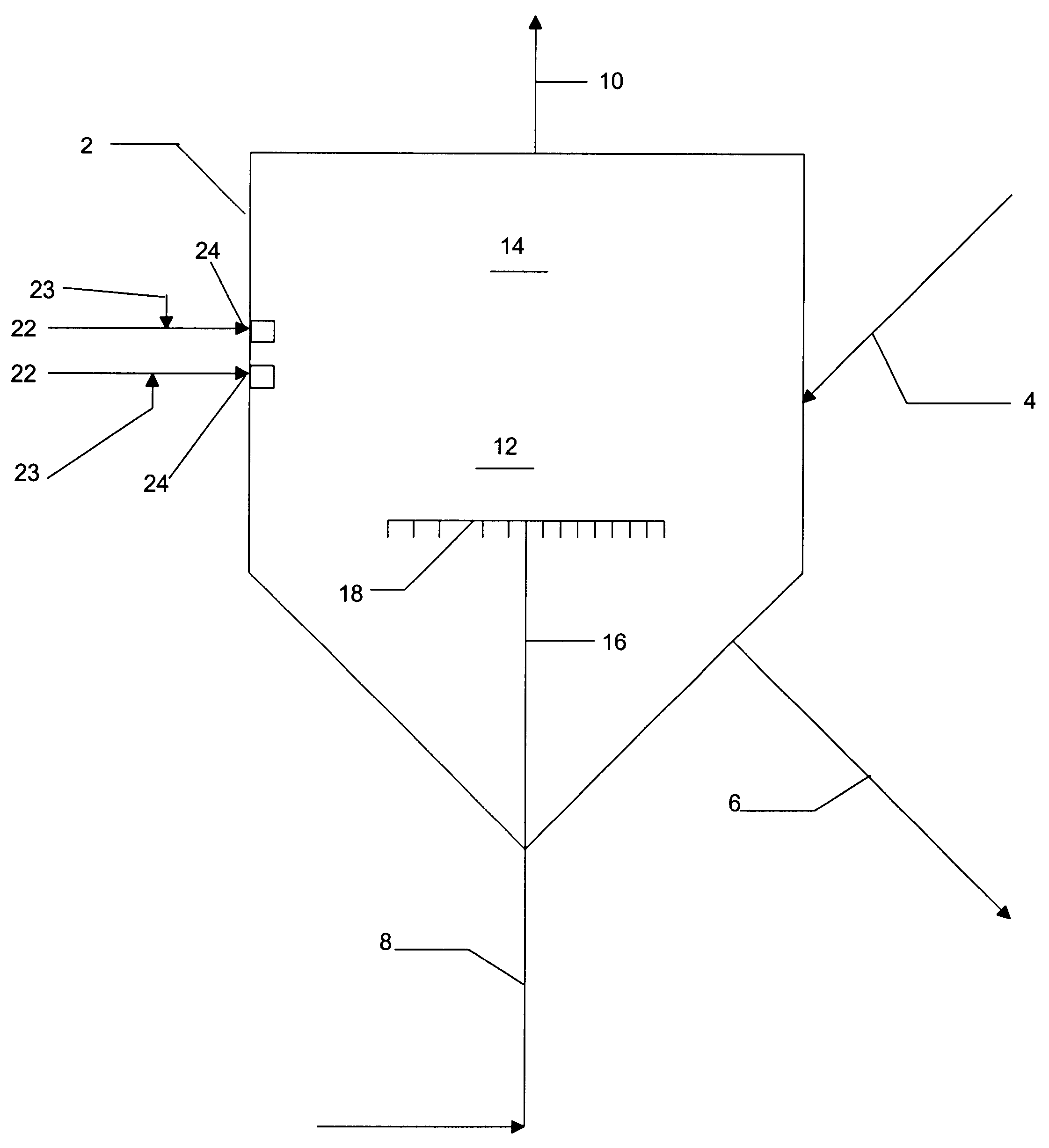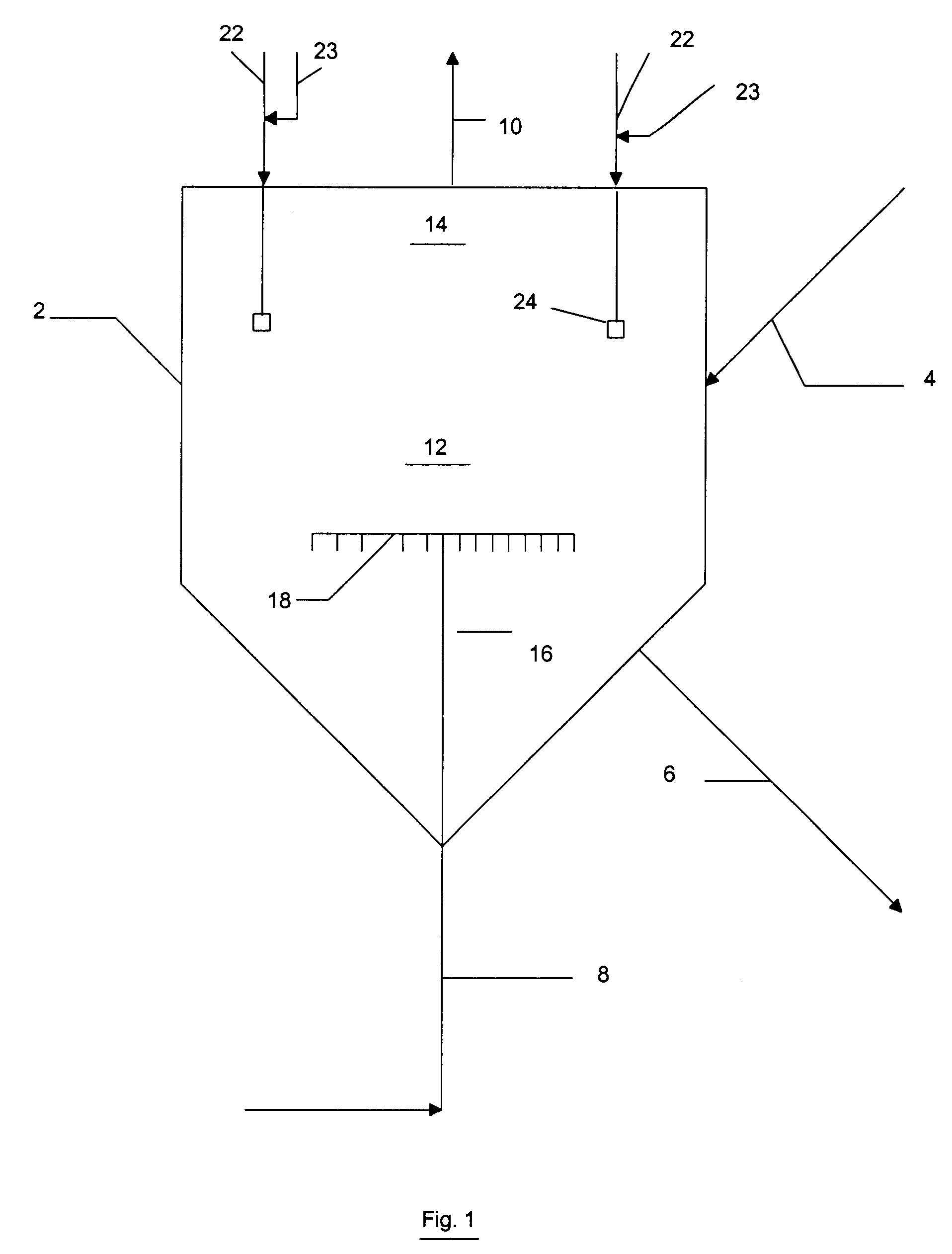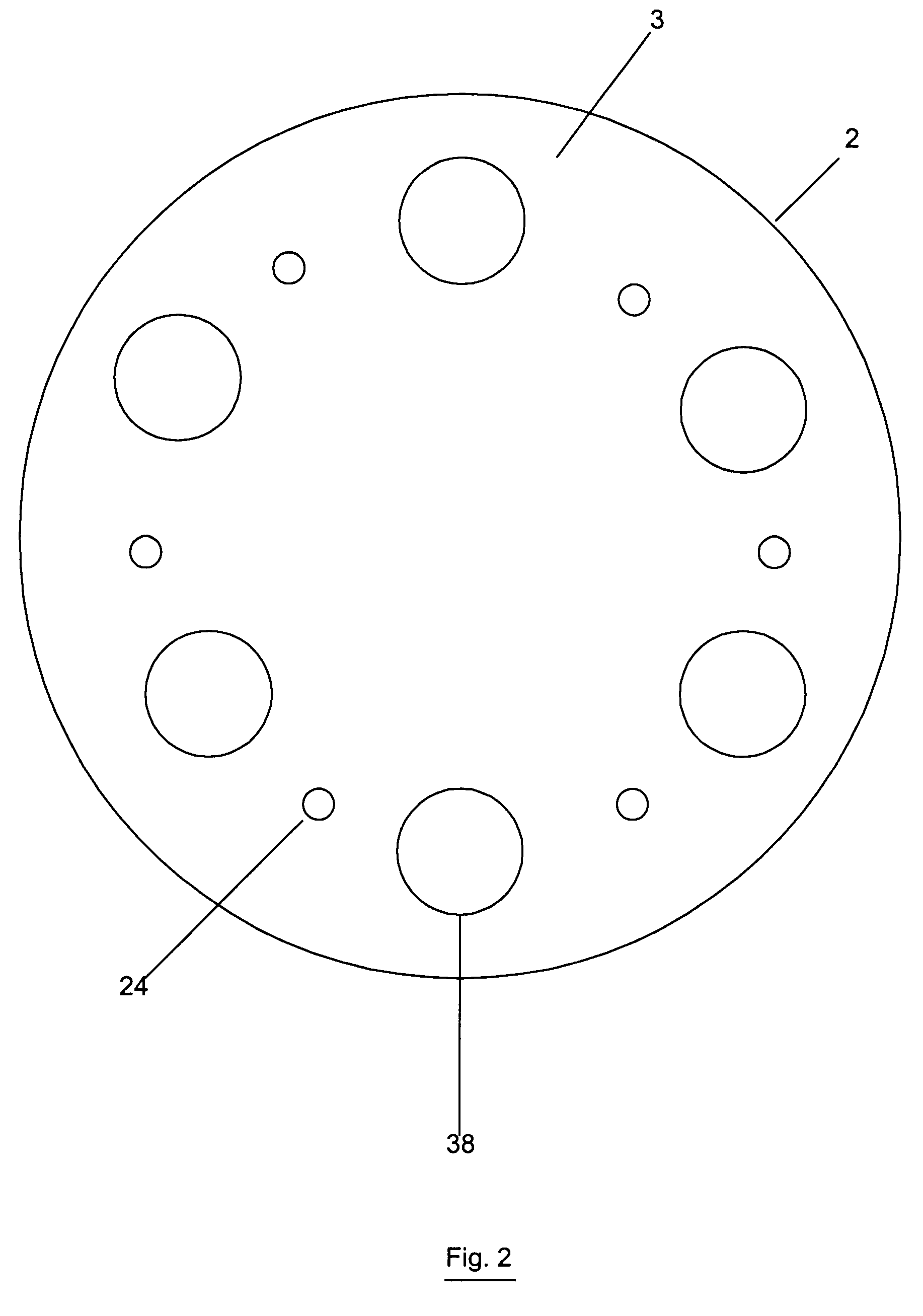Reactor modifications for NOx reduction from a fluid catalytic cracking regeneration vessel
a technology of fluid catalytic cracking and regeneration vessel, which is applied in the direction of liquid gas reaction process, metal/metal-oxide/metal-hydroxide catalyst, and combustion gas purification/modification. it can solve the problems of unstable reduction of nitrogen species, capital-intensive and expensive options
- Summary
- Abstract
- Description
- Claims
- Application Information
AI Technical Summary
Benefits of technology
Problems solved by technology
Method used
Image
Examples
example 2
A 1" ID reactor system was used to perform CO kinetic experiments. A T-mixing station was placed at the entrance to the reactor with preheating of the feeds so that hot feeds could be mixed in a rigorous fashion just prior to entering the reactor. A cooling coil exchanger was placed at the reactor outlet to cool exit gases quickly.
Results, presented in Table 1 below, indicate that CO combustion could be achieved by 1% to 2% O.sub.2 in the dilute phase of a FCC regeneration vessel operating at typical temperatures in the range of 700.degree. C. or higher in the case where a CO boiler is not available and carbon monoxide exiting the dense catalyst bed has a concentration of up to 1%. About 10 seconds of gas residence time appears to reduce CO from approximately 1% to the 200 ppm range, and a typical FCC regeneration vessel would have over 10 seconds of gas residence time available for this purpose.
example 3
For nitrogen oxide (NO) experimentation, a 1" ID reactor was used with an expanded head region for catalyst disengagement. A high matrix equilibrium FCC catalyst was used, and gas residence time in the catalyst bed was calculated to be 2 seconds. Typical gas residence time in a FCC dense phase catalyst bed is over 3 seconds. The reactor was maintained at roughly 730.degree. C. throughout the experiments.
First, the catalyst was exposed to 21% O.sub.2 in N.sub.2 for 5 minutes. The catalyst was then exposed to 1.5% H.sub.2 in N.sub.2 for 2 minutes. This procedure is meant to simulate the time the catalyst is in the regeneration vessel in an oxidizing atmosphere and then in the riser / stripper in a reducing atmosphere. N.sub.2 was used to briefly purge the catalyst after each step. A stream containing 0.5% CO and 500 ppm NO in N.sub.2 was passed over the catalyst with a 2 second residence time in the catalyst bed. The concentration of NO exiting the reactor was too small to measure. The ...
example 4
For NH.sub.3 and HCN kinetic experimentation, a 1" ID reactor was used without catalyst present in order to simulate the dilute catalyst phase. The data in Table 3 indicates that in a 4 second residence time, oxygen could be introduced to a stream with as high as 2% CO and still obtain preferential oxidation of NH.sub.3 and HCN. When the concentration of O.sub.2 exiting the reaction zone is in the range of 100 to 200 ppm, a significant portion of the resulting NO is destroyed, even in that relatively short residence time.
PUM
| Property | Measurement | Unit |
|---|---|---|
| temperature | aaaaa | aaaaa |
| temperature | aaaaa | aaaaa |
| temperature | aaaaa | aaaaa |
Abstract
Description
Claims
Application Information
 Login to View More
Login to View More - R&D
- Intellectual Property
- Life Sciences
- Materials
- Tech Scout
- Unparalleled Data Quality
- Higher Quality Content
- 60% Fewer Hallucinations
Browse by: Latest US Patents, China's latest patents, Technical Efficacy Thesaurus, Application Domain, Technology Topic, Popular Technical Reports.
© 2025 PatSnap. All rights reserved.Legal|Privacy policy|Modern Slavery Act Transparency Statement|Sitemap|About US| Contact US: help@patsnap.com



